Insulin resistance is a growing health concern affecting millions of people worldwide. It occurs when the body’s cells don’t respond well to insulin, leading to high blood sugar levels. This condition can increase the risk of type 2 diabetes, heart disease, and other health problems.

Introducing Sugar Defender, an advanced blend of 24 proven ingredients supports healthy glucose levels and natural weight loss.
Reversing insulin resistance is possible through lifestyle changes and targeted strategies. By making smart food choices, increasing physical activity, and adopting healthy habits, many people can improve their insulin sensitivity. These changes can help the body use insulin more effectively and maintain better blood sugar control.
This article will explore 15 practical tips to help reverse insulin resistance. From dietary adjustments to exercise routines, stress management techniques, and more, these strategies can support overall health and well-being. By implementing these tips, readers can take steps toward better insulin sensitivity and improved long-term health outcomes.
Key Takeaways
- Lifestyle changes can significantly improve insulin sensitivity
- A balanced diet and regular exercise are crucial for managing insulin resistance
- Monitoring progress and seeking professional guidance aids in long-term success
Understanding Insulin Resistance
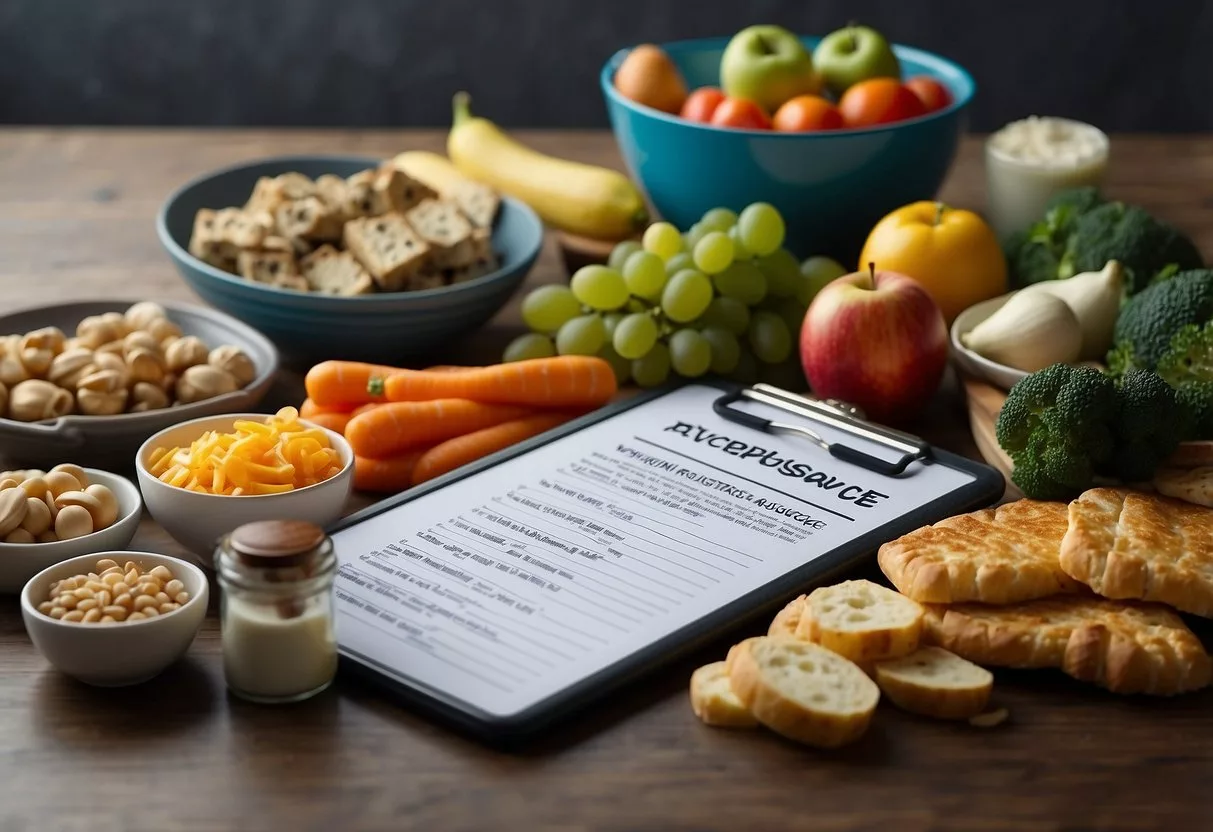
Insulin resistance is a condition where the body’s cells don’t respond well to insulin. This can lead to high blood sugar levels and increase the risk of type 2 diabetes.
The Role of Insulin in the Body
Insulin is a hormone made by the pancreas. It helps cells take in glucose from the blood. When we eat, our blood sugar goes up. The pancreas then releases insulin. This tells cells to absorb the sugar for energy or storage.
In a healthy body, insulin keeps blood sugar levels steady. It also helps the body store extra sugar for later use. Insulin is key for turning food into energy our bodies can use.
Contributing Factors to Insulin Resistance
Several things can make insulin resistance more likely. Being overweight or obese is a big risk factor. Extra fat, especially around the waist, can make cells less sensitive to insulin.
Age plays a role too. As people get older, their risk goes up. Family history matters as well. If close relatives have diabetes, a person’s chances of insulin resistance increase.
Other factors include:
- Lack of exercise
- Poor diet high in sugar and processed foods
- Not getting enough sleep
- Chronic stress
Recognizing the Symptoms of Insulin Resistance
Insulin resistance often has no clear signs at first. But over time, some symptoms may show up. These can include:
- Feeling very thirsty or hungry
- Needing to pee more often
- Feeling tired a lot
- Blurry vision
A dark, velvety skin change called acanthosis nigricans can also be a sign. It often appears on the neck, armpits, or groin. High blood sugar levels in tests are another clue.
If left unchecked, insulin resistance can lead to prediabetes or type 2 diabetes. Regular check-ups with a doctor can catch it early.
Lifestyle Adjustments to Combat Insulin Resistance

Making changes to daily habits can help fight insulin resistance. These changes focus on exercise, food choices, weight control, and better sleep.
Incorporating Regular Physical Activity
Exercise is key in battling insulin resistance. Aim for 150 minutes of moderate activity each week. This can include brisk walks, swimming, or cycling. Strength training is also important. It builds muscle, which helps use glucose better.
Try to move more throughout the day. Take stairs instead of elevators. Park farther away when shopping. Stand up and stretch every hour if you sit a lot.
Start slow if you’re new to exercise. Gradually increase time and intensity. Find activities you enjoy to stay motivated.
Optimizing Dietary Habits
Eating the right foods can improve insulin sensitivity. Focus on whole, unprocessed foods. Fill half your plate with vegetables at meals. Choose whole grains over refined ones.
Add more fiber to your diet. It slows sugar absorption. Good sources include:
- Beans
- Lentils
- Berries
- Nuts
- Seeds
Limit sugary drinks and snacks. Pick water or unsweetened tea instead. When eating fruit, pair it with protein or fat to slow sugar absorption.
Addressing Weight Management
Losing extra weight can boost insulin sensitivity. Even a 5-10% weight loss can make a big difference. Focus on sustainable changes, not quick fixes.
Create a small calorie deficit each day. This leads to steady weight loss over time. Eat more low-calorie, high-volume foods like vegetables. They help you feel full with fewer calories.
Don’t skip meals. This can lead to overeating later. Instead, plan regular, balanced meals and snacks.
Improving Sleep Patterns
Poor sleep can worsen insulin resistance. Aim for 7-9 hours of sleep each night. Set a regular sleep schedule. Go to bed and wake up at the same time daily.
Create a relaxing bedtime routine. This signals your body it’s time to sleep. Avoid screens an hour before bed. The blue light can disrupt sleep hormones.
Keep your bedroom cool, dark, and quiet. Use blackout curtains or a sleep mask if needed. Consider white noise to block out disruptive sounds.
Nutritional Strategies to Enhance Insulin Sensitivity
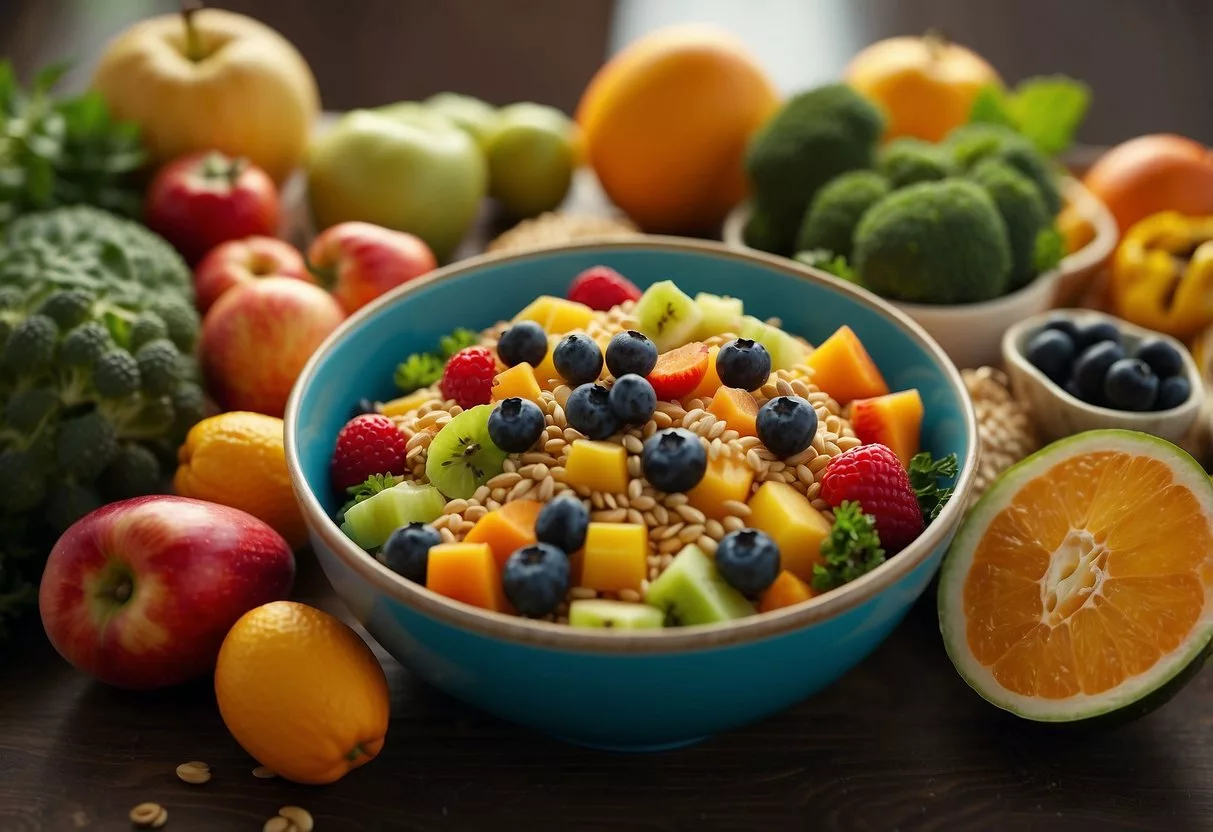
Eating the right foods can help improve how your body responds to insulin. A few key changes to your diet can make a big difference in managing blood sugar levels.
Focusing on High-Fiber Foods
Fiber plays a big role in improving insulin sensitivity. Foods high in fiber slow down digestion and help control blood sugar spikes.
Vegetables are a great source of fiber. Try to eat more:
- Leafy greens like spinach and kale
- Broccoli and cauliflower
- Brussels sprouts
- Carrots and beets
Whole grains also pack a lot of fiber. Good options include:
- Oats
- Quinoa
- Brown rice
- Whole wheat bread
Aim for 25-30 grams of fiber each day. Start slowly and drink more water as you add fiber to your diet.
Choosing the Right Types of Carbohydrates
Not all carbs are created equal. Complex carbohydrates are better for blood sugar control than simple ones.
Complex carbs to eat more of:
- Sweet potatoes
- Beans and lentils
- Whole grain pasta
- Barley
Simple carbs to limit:
- White bread
- White rice
- Sugary cereals
- Pastries
Complex carbs break down slowly, keeping blood sugar more stable. They also tend to have more fiber and nutrients.
Reducing Intake of Added Sugars and Processed Foods
Added sugars and processed foods can harm insulin sensitivity. Cutting back on these items can help your body use insulin better.
Foods high in added sugar to avoid:
- Sodas and sweetened drinks
- Candy and chocolate
- Ice cream
- Baked goods
Processed foods to limit:
- Chips and crackers
- Frozen dinners
- Fast food
- Packaged snacks
Read food labels to spot hidden sugars. Look for words like sucrose, high fructose corn syrup, and dextrose.
Incorporating Healthy Fats and Lean Protein
Healthy fats and lean proteins are important for insulin sensitivity. They help you feel full and can slow the absorption of sugar into your blood.
Good sources of healthy fats:
- Avocados
- Nuts and seeds
- Olive oil
- Fatty fish like salmon
Lean protein options:
- Chicken breast
- Turkey
- Tofu
- Greek yogurt
Try to include a mix of healthy fats and lean protein with each meal. This can help keep blood sugar levels steady throughout the day.
Regular Exercise Regimen

Exercise plays a crucial role in reversing insulin resistance. A well-rounded routine combines cardiovascular activities with strength training to boost insulin sensitivity and improve overall health.
The Importance of Cardiovascular Training
Cardiovascular exercise helps lower blood sugar levels and increase insulin sensitivity. Aim for at least 150 minutes of moderate-intensity aerobic activity per week. This can include:
- Brisk walking
- Swimming
- Cycling
- Dancing
These activities make muscles use more glucose, reducing blood sugar levels. They also help the body respond better to insulin. Start with short sessions and gradually increase duration and intensity.
For best results, try to exercise daily. Even a 10-minute walk after meals can make a difference. Regular cardio also helps with weight management, which is key in reversing insulin resistance.
Benefits of Resistance Training
Resistance training builds muscle mass, which in turn improves insulin sensitivity. Muscles are major users of glucose in the body. More muscle means better blood sugar control. Include resistance training 2-3 times per week. Focus on:
- Full-body workouts
- Compound exercises (squats, deadlifts, push-ups)
- Progressive overload
Start with bodyweight exercises if you’re new to strength training. Gradually add weights as you get stronger. Resistance bands are also a good option for beginners.
Combining cardio and strength training gives the best results. This mix helps burn fat, build muscle, and improve insulin function. Always check with a doctor before starting a new exercise program.
Therapeutic Use of Herbs and Supplements
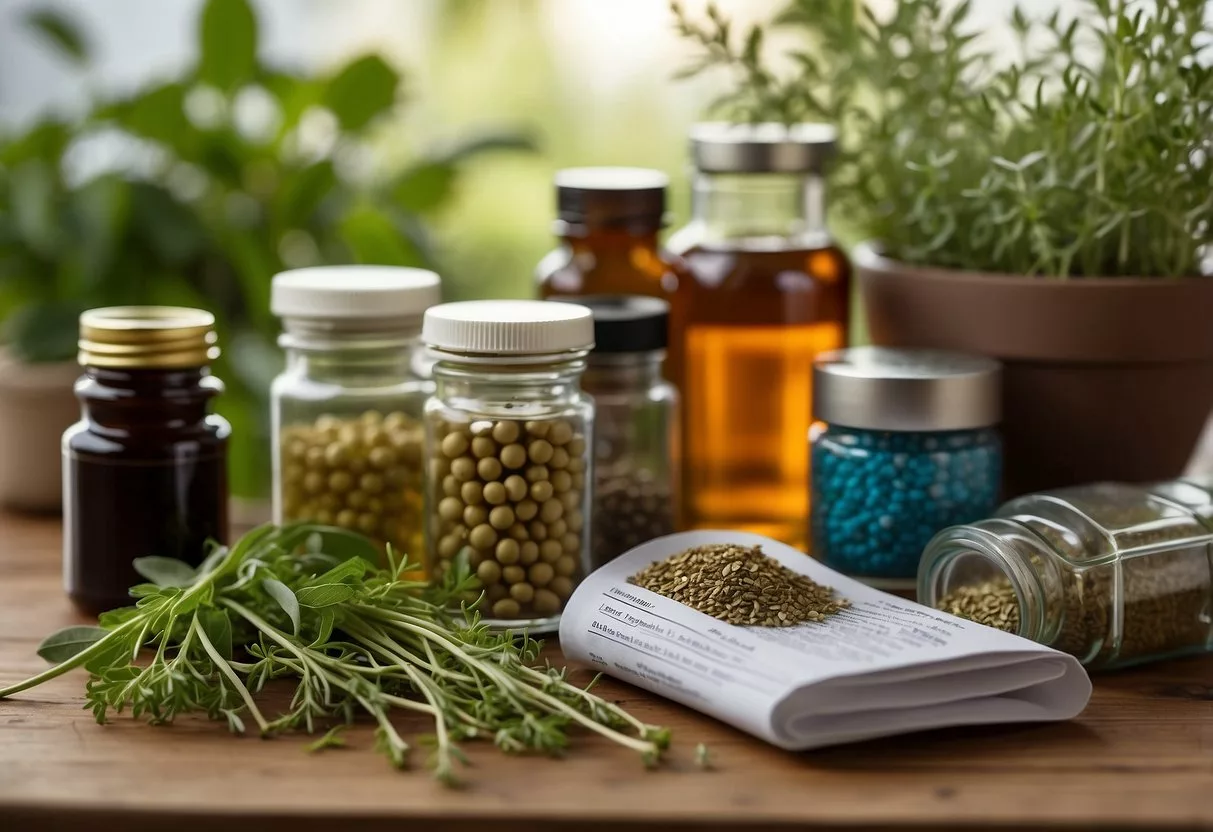
Certain herbs and supplements may help manage insulin resistance. These natural options can support blood sugar control and improve insulin sensitivity when used as part of a healthy lifestyle.
Identifying Effective Supplements
Magnesium plays a key role in blood sugar regulation. Low magnesium levels are linked to insulin resistance. Taking a magnesium supplement may improve insulin function.
Vitamin C is an antioxidant that may help lower blood sugar levels. It might also protect cells from damage caused by high blood sugar.
Probiotics support gut health. A healthy gut can lead to better blood sugar control. Some studies show probiotics may reduce insulin resistance.
Green tea contains compounds that may boost insulin sensitivity. Drinking green tea or taking green tea extract might help manage blood sugar.
Herbs and Their Potential Benefits
Cinnamon is a popular spice that may help lower blood sugar. It might make cells more sensitive to insulin. Adding cinnamon to food or taking it as a supplement could be helpful.
Berberine is an herb used in traditional Chinese medicine. It may lower blood sugar levels as effectively as some diabetes drugs.
Ginger has anti-inflammatory effects. It might help reduce insulin resistance. Ginger can be added to food or taken as a supplement.
Apple cider vinegar may improve insulin sensitivity. It can be added to water or used in cooking.
Turmeric contains curcumin, which may help reduce inflammation. This could lead to better insulin function.
Monitoring and Testing for Improved Management

Regular monitoring and testing are key for managing insulin resistance. These practices help track progress and guide treatment decisions.
Understanding Blood Sugar and A1C Tests
Blood sugar tests measure glucose levels at a specific time. The fasting blood glucose test checks levels after not eating for 8 hours. Normal fasting blood sugar is under 100 mg/dL.
The oral glucose tolerance test shows how the body processes sugar over time. It involves drinking a sugary solution and testing blood glucose at intervals.
The A1C test reflects average blood sugar over 2-3 months. It measures the percent of hemoglobin coated with sugar. The American Diabetes Association recommends an A1C below 5.7% for most adults.
High blood sugar can lead to excess glucose stored as glycogen in the liver. This process is linked to insulin resistance.
The Role of Regular Health Check-ups
Regular check-ups help catch insulin resistance early. Doctors often check waist measurement, as excess belly fat is linked to the condition.
Blood tests during check-ups can reveal high blood glucose levels. Early detection allows for lifestyle changes before insulin resistance worsens.
Doctors may also order specialized tests to assess insulin sensitivity. These can show how well the body responds to insulin.
Check-ups allow healthcare providers to monitor overall health. They can spot other issues that may affect insulin resistance, like high blood pressure.
Regular visits also let patients discuss any symptoms or concerns with their doctor. This ongoing dialogue is crucial for managing insulin resistance effectively.
Mental and Emotional Health Considerations

Mental and emotional well-being play a key role in managing insulin resistance. Stress reduction and mindfulness practices can help improve metabolic health.
Managing Stress for Better Metabolic Health
High stress levels can lead to insulin resistance. When stressed, the body releases cortisol, which can raise blood sugar. To manage stress:
• Get enough sleep (7-9 hours nightly) • Exercise regularly • Practice time management • Set realistic goals • Connect with supportive people
Limiting caffeine and alcohol intake can also help keep cortisol levels in check. Some people find keeping a stress journal helpful for identifying triggers.
Regular health check-ups are important. A doctor can test cortisol levels and suggest personalized stress management strategies.
Mindfulness and Relaxation Techniques
Mindfulness practices can help reduce stress and improve insulin sensitivity. Simple techniques to try:
• Deep breathing: Take slow, deep breaths for 5 minutes daily. • Meditation: Start with 5-10 minutes of quiet reflection each day. • Yoga: Gentle stretching and breathing exercises can calm the mind and body. • Progressive muscle relaxation: Tense and relax each muscle group.
These practices can lower cortisol and blood sugar levels. Many find it helpful to set a regular time for relaxation, such as right after waking or before bed.
Apps and online videos offer guided meditations and yoga sessions for beginners. Consistency is key – even short daily practice can yield benefits over time.
Understanding the Risks Associated with Insulin Resistance
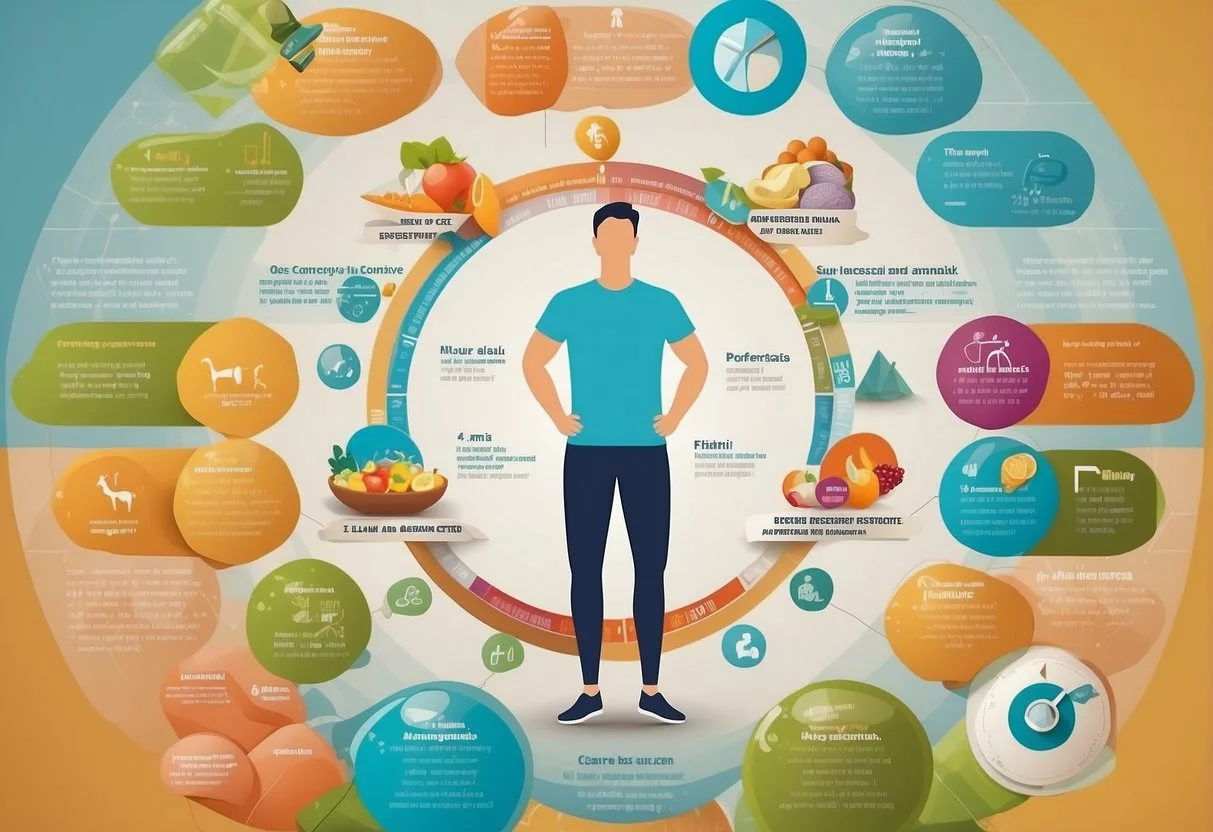
Insulin resistance can lead to serious health issues. It affects how the body processes glucose and can damage organs over time. Knowing these risks helps people take action to improve their health.
Connection to Diabetes and Prediabetes
Insulin resistance is closely tied to type 2 diabetes and prediabetes. When cells don’t respond well to insulin, blood sugar levels rise. This can lead to prediabetes, where blood sugar is higher than normal but not yet at diabetic levels.
If not addressed, prediabetes often progresses to type 2 diabetes. In this condition, the body can’t use insulin properly, causing chronically high blood sugar. This can harm blood vessels, nerves, and organs.
Early detection of insulin resistance is key. It allows for lifestyle changes that may prevent or delay diabetes onset.
Insulin Resistance and Heart Disease
Insulin resistance increases the risk of heart disease. It often occurs with other heart risk factors like:
- High blood pressure
- Abnormal cholesterol levels
- Excess body fat, especially around the waist
These factors, combined with insulin resistance, can lead to:
- Atherosclerosis (hardening of arteries)
- Heart attacks
- Strokes
Insulin resistance also promotes inflammation in blood vessels. This further raises the risk of heart problems and makes existing heart disease worse.
Other Health Complications
Insulin resistance affects many body systems. It can lead to:
- Fatty liver disease: Excess fat builds up in the liver, potentially causing liver damage.
- Polycystic ovary syndrome (PCOS): This hormonal disorder can cause irregular periods and fertility issues in women.
- Increased cancer risk: Some studies link insulin resistance to higher rates of certain cancers.
- Brain health issues: It may raise the risk of cognitive decline and dementia.
Regular check-ups and blood tests can help detect insulin resistance early. This allows for timely interventions to prevent these complications.
Practical Tips for Daily Living with Insulin Resistance

Managing insulin resistance requires careful attention to daily habits and choices. These tips can help make living with insulin resistance easier and more effective.
Balancing Meals and Snacks
Plan meals with a mix of protein, healthy fats, and complex carbs. This helps keep blood sugar stable. Aim for 3 balanced meals and 2-3 small snacks daily.
Choose foods with a low glycemic index to avoid blood sugar spikes. Good options include:
- Whole grains
- Beans and lentils
- Non-starchy vegetables
- Berries
Limit sugary foods and drinks. They can cause quick blood sugar rises.
Eat fiber-rich foods. They slow digestion and help control appetite. Try to get 25-30 grams of fiber per day.
Stay hydrated. Drink water instead of sugary drinks. This helps the body use insulin better.
Navigating Social Situations and Dining Out
Check menus ahead of time when eating out. This makes it easier to pick insulin-friendly options.
Don’t be afraid to ask for substitutions. Request grilled items instead of fried, or extra veggies instead of fries.
At parties, fill half the plate with veggies. Choose lean proteins and small portions of complex carbs.
Bring a healthy dish to share at gatherings. This ensures there’s always a good option available.
Eat a small snack before going out. It helps avoid overeating due to hunger.
Be mindful of alcohol. It can affect blood sugar. If drinking, do so in moderation and with food.
Adapting Recipes and Cooking Methods
Use healthier cooking methods. Grill, bake, roast, or steam instead of frying.
Swap refined grains for whole grains in recipes. Try brown rice, quinoa, or whole wheat pasta.
Replace sugar with natural sweeteners like stevia or monk fruit in baking.
Add extra vegetables to dishes. They boost nutrition without adding many calories.
Use herbs and spices for flavor instead of sugar or salt.
Try new recipes that focus on low-glycemic foods. This keeps meals interesting and healthy.
Experiment with meat alternatives like tofu or tempeh. They can be good protein sources with less saturated fat.
Long-Term Management and Follow-Up
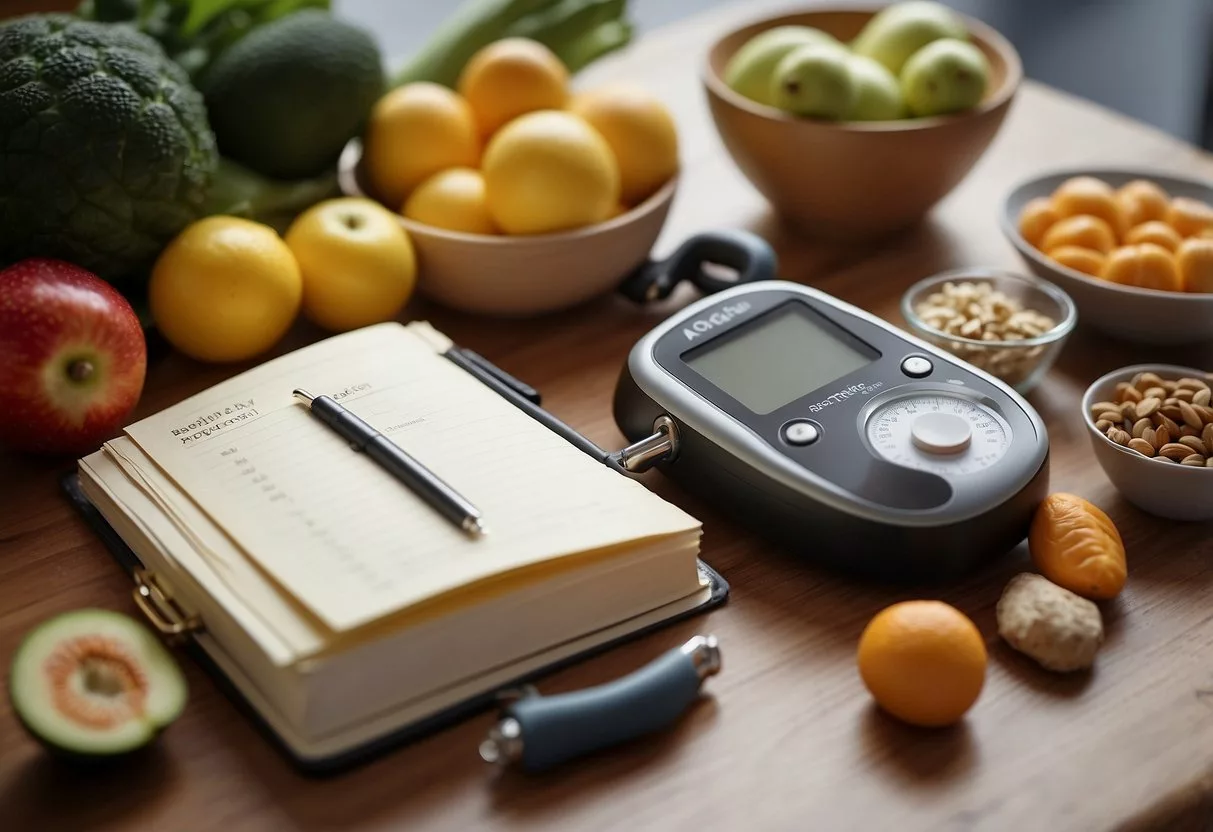
Managing insulin resistance requires ongoing effort and support. Lifestyle changes and regular medical care are key for long-term success.
Strategies for Sustaining Lifestyle Adaptations
Sticking to new habits can be tough. Make small, gradual changes instead of big ones all at once. Set realistic goals and track progress. Find activities you enjoy, like dancing or hiking, to stay active. Plan healthy meals ahead of time to avoid unhealthy choices. Get family and friends involved for support. Join support groups to connect with others facing similar challenges. Use apps or wearable devices to monitor diet and exercise. Celebrate small wins to stay motivated. If you slip up, don’t give up – just get back on track.
The Importance of Continuous Medical Support
Regular check-ups with a health care provider are vital. They can monitor your progress and adjust treatment as needed. Blood tests help track glucose levels and other important markers. Your doctor can also screen for related conditions like high blood pressure or high cholesterol. They may recommend medications if lifestyle changes aren’t enough. Ask questions and discuss any concerns during appointments. Keep a log of symptoms, diet, and exercise to share with your provider. Consider seeing a dietitian or diabetes educator for extra guidance. Stay up-to-date on new research and treatment options.
Promoting Insulin Sensitivity through Weight Management
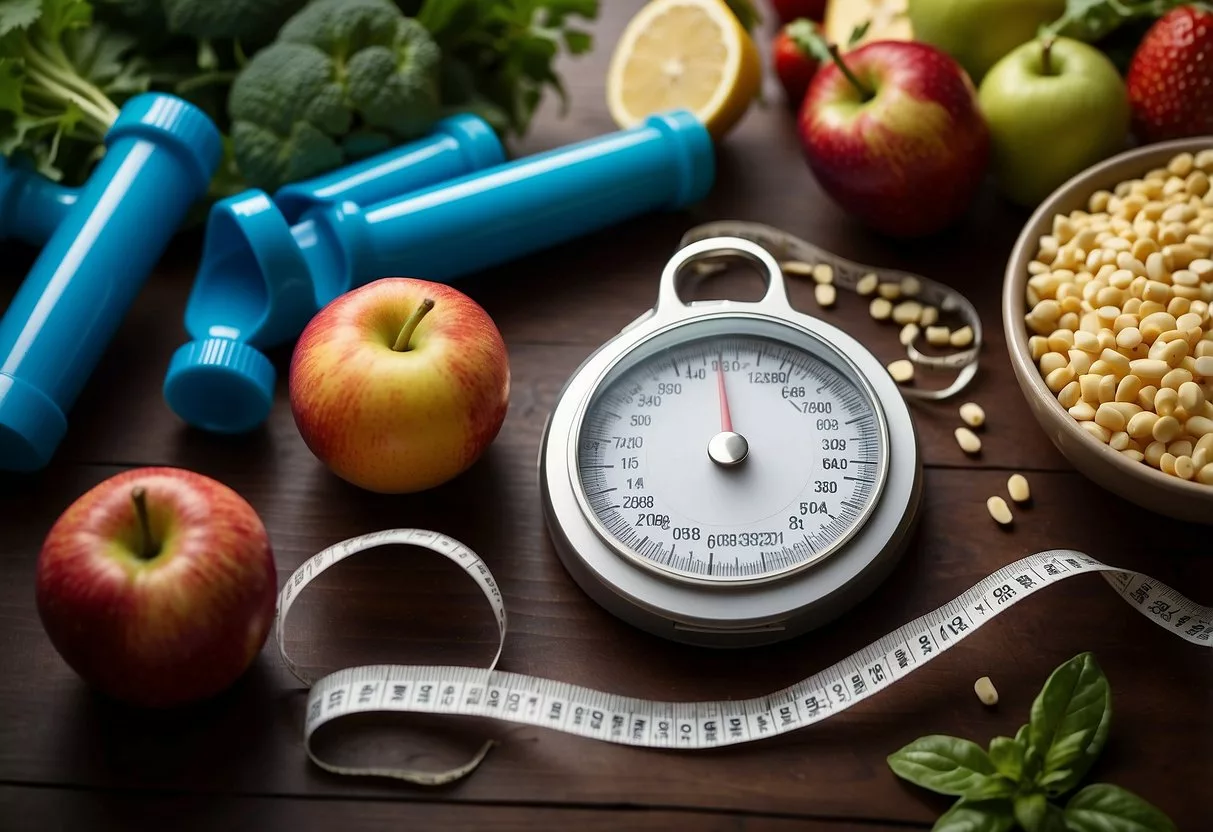
Weight management plays a key role in improving insulin sensitivity. Reducing excess body fat, especially around the waist, can help the body respond better to insulin.
Effective Strategies for Weight Reduction
Weight loss of 5-10% can boost insulin sensitivity. A balanced diet with fewer calories is crucial. Focus on eating more vegetables, lean proteins, and whole grains. Cut back on sugary drinks and processed foods.
Regular exercise is vital. Aim for 150 minutes of moderate activity per week. This can include brisk walking, swimming, or cycling. Strength training twice a week also helps build muscle, which burns more calories.
Tracking food intake helps many people lose weight. Use a food diary or smartphone app to log meals and snacks. This raises awareness of eating habits and helps spot areas for improvement.
Getting enough sleep is often overlooked but very important. Lack of sleep can disrupt hormones that control hunger and fullness. Aim for 7-9 hours of quality sleep each night.
Understanding the Role of Body Fat Distribution
Where fat is stored on the body matters for insulin sensitivity. Belly fat is linked to higher insulin resistance. This type of fat, also called visceral fat, surrounds organs and releases hormones that can interfere with insulin function.
Measuring waist size can indicate visceral fat levels. For men, a waist over 40 inches (102 cm) is high risk. For women, it’s over 35 inches (88 cm). Losing even a small amount of belly fat can improve insulin sensitivity.
Diet and exercise can target belly fat. High-intensity interval training (HIIT) is especially effective. This involves short bursts of intense exercise followed by rest periods. Stress reduction techniques like meditation may also help, as stress can lead to fat storage around the waist.
Frequently Asked Questions
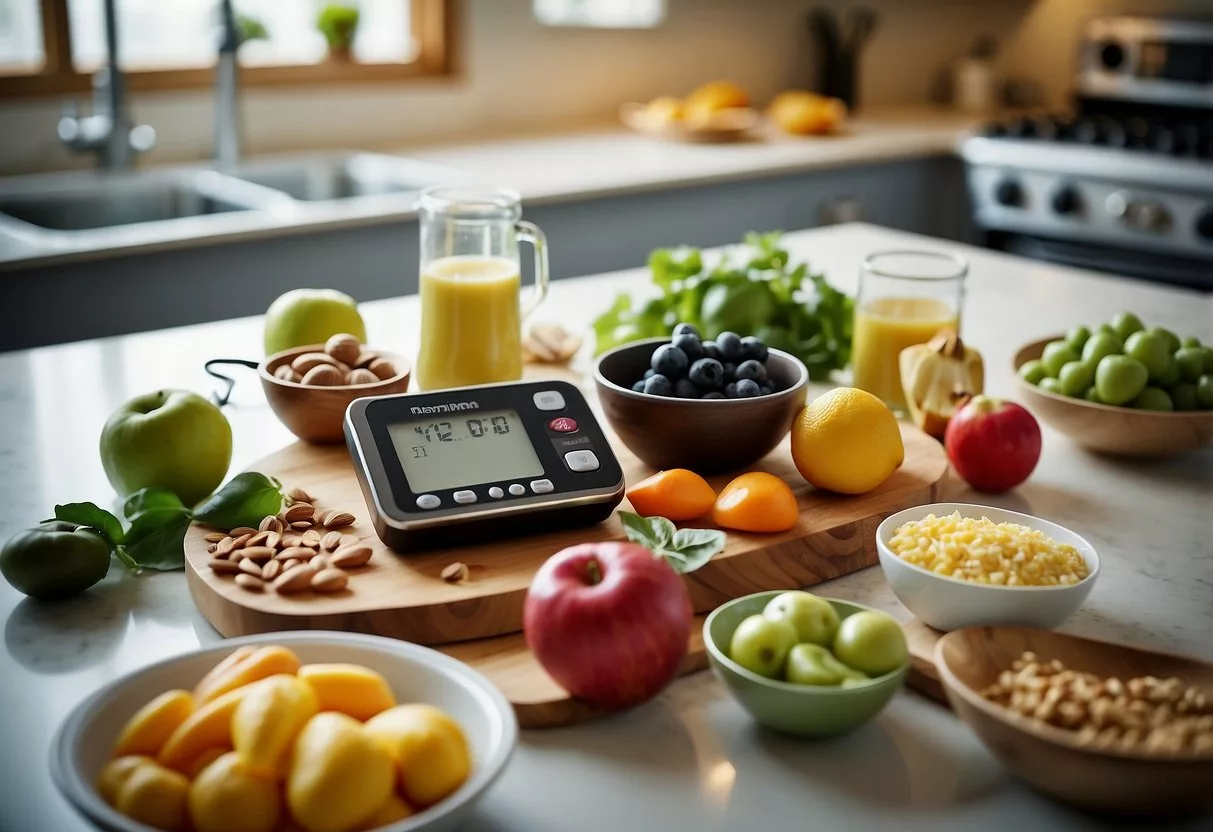
Dietary changes, supplements, and lifestyle modifications can help manage insulin resistance. Specific indicators and symptoms may signal improvements or the presence of insulin resistance. Natural methods can also support insulin production.
What dietary changes can help manage insulin resistance?
Eating more fiber-rich foods can improve insulin sensitivity. Good choices include vegetables, fruits, and whole grains. Limiting added sugars and refined carbs is also key.
Healthy fats from nuts, seeds, and fish may help too. Lean proteins like chicken and beans are smart picks. Spreading meals throughout the day can keep blood sugar steady.
Can insulin resistance be reversed with dietary supplements, and which ones are most effective?
Some supplements may help with insulin resistance. Chromium supports blood sugar control. Berberine has shown promise in reversing insulin resistance.
Magnesium and vitamin D are also linked to better insulin function. Alpha-lipoic acid may help too. It’s best to talk to a doctor before starting any new supplements.
What are the indicators that insulin resistance is improving?
Lower fasting blood sugar levels can show improvement. Better energy levels throughout the day may be a sign. Weight loss, especially around the waist, often occurs.
Improved cholesterol numbers can indicate progress. Fewer sugar cravings may happen too. Regular testing with a doctor can track these changes over time.
How can insulin sensitivity be quickly enhanced through lifestyle modifications?
Regular exercise is a powerful way to boost insulin sensitivity. Both cardio and strength training help. Getting enough sleep each night is crucial too.
Stress reduction techniques like meditation can make a difference. Staying hydrated supports insulin function. Small, frequent meals can also help manage blood sugar.
What symptoms typically indicate insulin resistance in women?
Increased belly fat is a common sign in women. Irregular periods or polycystic ovary syndrome (PCOS) may occur. Skin tags or dark patches on the skin can be indicators.
Fatigue, especially after meals, is another symptom. Increased thirst and frequent urination may happen. Difficulty losing weight despite diet changes can also point to insulin resistance.
What natural methods are effective for boosting insulin production in the pancreas?
Regular physical activity stimulates insulin production. Eating foods rich in zinc, like pumpkin seeds, can support pancreas function. Staying hydrated helps the pancreas work well.
Getting enough sleep allows the pancreas to rest and recover. Reducing stress through relaxation techniques may help. Cinnamon has shown potential to boost insulin sensitivity naturally.